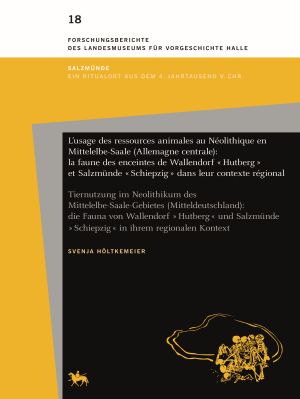
How to Cite
License

This work is licensed under a Creative Commons Attribution-NonCommercial-NoDerivatives 4.0 International License.
Published
L’usage des ressources animales au Néolithique en Mittelelbe-Saale (Allemagne centrale): la faune des enceintes de Wallendorf « Hutberg » et Salzmünde « Schiepzig » dans leur contexte régional
Various early farming cultures populated the Middle Elbe-Saale region between 4200 and 2800 BC. Animal bones from two crucial sites, Wallendorf "Hutberg" and Salzmünde "Schiepzig", were analyzed and compared with faunal remains from 29 other pertinent published sites to demonstrate the cultural diversity involved in the development of animal use. In total, more than 33,000 animal remains were statistically evaluated using archaeozoological methods. The results show that food production was mainly based on cattle breeding and that certain sites showed evidence of specialization in the animal species and animal products used. Moreover, symbolic practices demonstrate that communities showed a particular appreciation of specific animals, who thus had a unique relationship with people.
Additional information you find here: https://doi.org/10.11588/data/QXMSS3






